The MRGO Long Rocks are a great destination for inshore anglers wanting to try their hand at catching a limit of speckled trout.
But where is this fishing hot spot located? How can you get there safely and what's the best way to fish it?
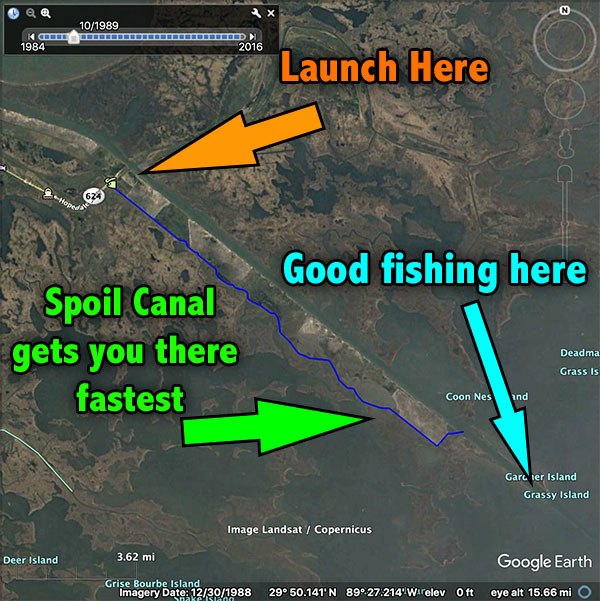
Those questions are what this guide answers, as well as links going to other articles on this website with more information.
If you have any questions, please post them in the comments section and I will get back to you as soon as possible.
Let's begin:
Everything You Need To Know To Fish The MRGO Long Rocks For Spring Speckled Trout
There's a lot for you to learn, so we'll keep this simple and detail the following items:
A Little Speckled Trout Biology:
Speckled trout begin spring inside of the marsh, where it is "fresher" and the salinity much lower. This is fine, because speckled trout can tolerate salinity so low that it is nearly fresh!
They were "inside" because that is where they rode out the winter pattern. But they cannot remain there the rest of the year!
This is because they need saltier water in order to spawn, about 15-17ppt, and will make their way from the "inside" of the marsh to the "outside" where that saltier water is.
As specks make their way toward the outer coast of Louisiana, they tend to pile up at the MRGO Long Rocks for a place to rest and eat.
This explains why the Long Rocks aren't particularly abuzz with speckled trout in December: their needs have them eating somewhere else. It is the alignment of the necessary conditions and circumstances that cause them to be at this hot spot.
The best time to fish the MRGO Long Rocks for speckled trout is from April to June.
Why are the Long Rocks so great for speckled trout?
If you were to look at a map of Louisiana's coast, you'd see that there are many locations that appear to be "good" to fish.
But not all of them produce fishing action like the MRGO Long Rocks do. Why?
Well, because it provides what trout need during that time of year:
Because of the MRGO's unique structure, speckled trout have a tidal highway they can take to their summer spawning grounds and deep water to hide in when the weather gets bad.
Plus, the rock piles (aka riprap) offer excellent cover for demersal finfish like violet gobies, cocahoes, and small croakers, so there's plenty of food for them to eat.
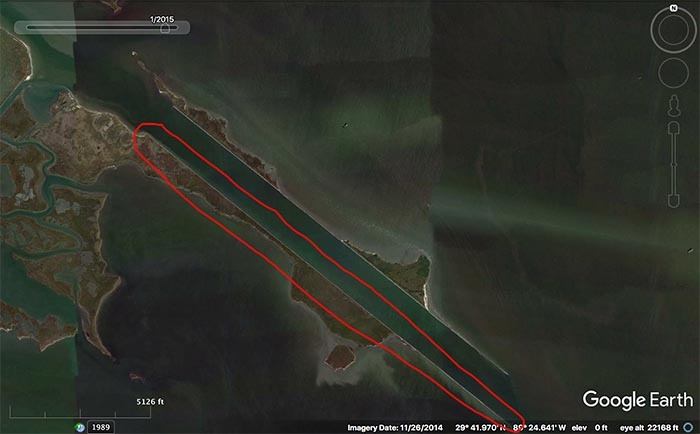
This stretch of the MRGO Long Rocks tends to be the most productive.
The MRGO Long Rocks isn't anything that is new...
This spot is nothing new and, that it turns on in spring, isn't a secret either.
If this weren't the case everyone and their mom wouldn't show up every year.
So, spoiler alert: The MRGO Long Rocks are a community honey hole.
When the word inevitably gets out (like it does every year), it will only be a matter of time before the place is pressured by the Flotilla and the trout go somewhere else.
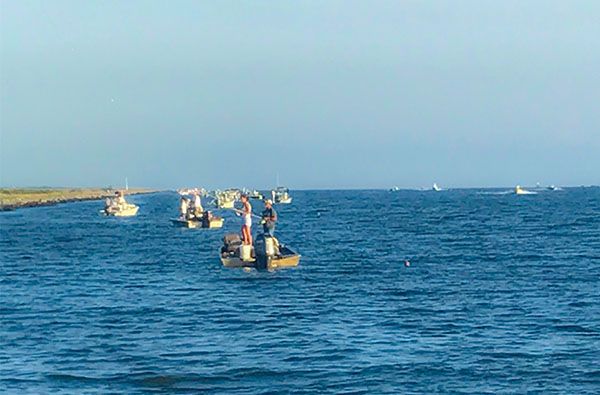
Knowing that the MRGO Long Rocks turn on is easy, but catching limits every time isn't.
But, if you keep reading this guide, you will learn the tips and tricks to making the most of the MRGO Long Rocks, even when it gets crowded.
And one way I do that is by changing how I fish MRGO Long Rocks, bringing in limits of speckled trout and leaving them biting.
It's a little different than what most inshore anglers utilize, and could even take a little bit of practice to get right.
The best way to really explain my method is by looking at the "traditional" method used by most anglers to fish the MRGO Long Rocks.
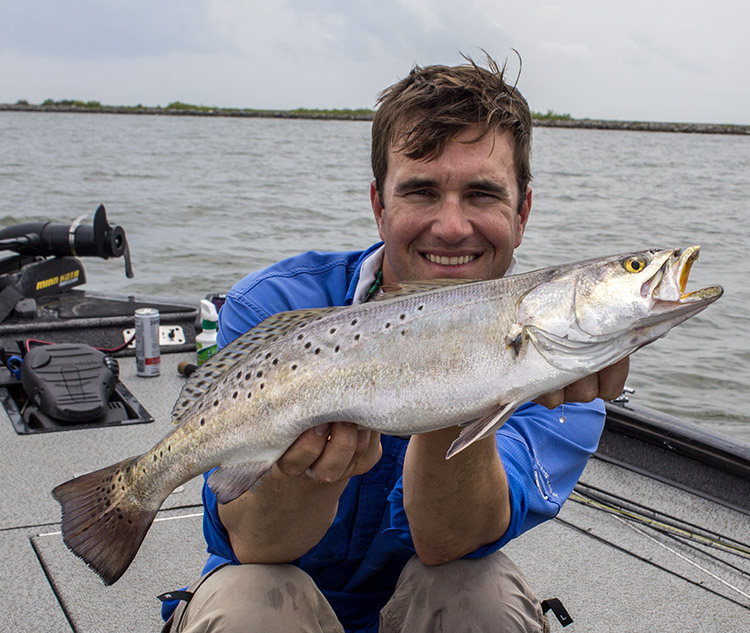
While not widely used, the methods I employ to catch speckled trout on the Long Rocks stand out from the rest of the crowd.
Traditional Methods of Catching Speckled Trout at the MRGO Long Rocks
Typically, boats anchor along the length of the rocks, about a casting distance away, and try their luck by chunking live shrimp under a cork.
Some do use soft plastic lures like Berkley Gulp Shrimp or Matrix Shad, otherwise that's pretty much it.
While this does work, it is not the most effective way to put limits of trout in the boat.
Why is that fishing with a cork and live shrimp is not the best way to catch speckled trout at the MRGO Long Rocks?
If you know my brand at all, then you know I generally recommend foregoing the use of live shrimp (for these many good reasons) and instead fishing with "artificial lures".
But, the two main reasons I recommend not using live shrimp at the MRGO Long Rocks are:
Somebody reading that just had a brain aneurism, so don't get me wrong: There is no doubt in my mind trout would love to eat shrimp.
But tons of shrimp aren't regularly flowing through there on their migration to the Gulf.
If they did, we'd see shrimp boats with wing nets catching them, but we don't.
Instead, we see them dragging the bottom of the ship channel, away from the rocks.
So, if the #1 forage isn't shrimp then what is it?
Speckled trout are feeding on finfish like violet gobies and croakers that live on or near the rocks, not unlike their winter pattern.
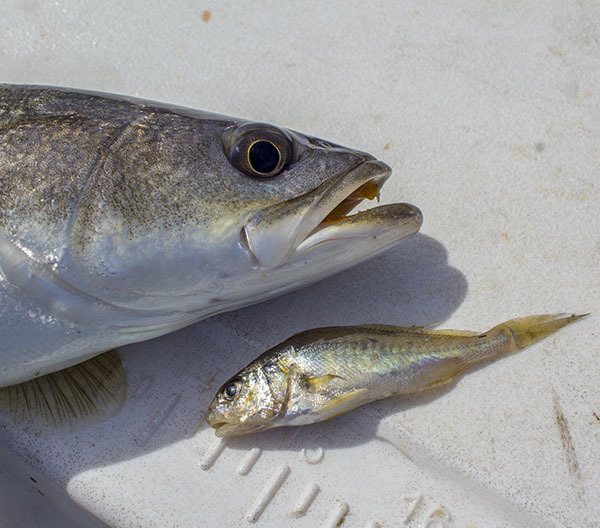
Since croakers are in the rocks, that's where speckled trout are looking to get a meal.
That's why they're on the rocks in the first place, and why they're not looking in open water 20 yards from the rocks, but in shallow water right on the rocks.
It's important to know what speckled trout are feeding on not because we want to use that as bait, but because it tells us where we need to be casting our bait.
A cork really isn't the best way to put bait where it needs to be, because your main line only directly affects the cork while the leader line hangs limp under it.
You just can't get the same presentation as a jig.
Now, does this mean you won't catch fish at all with a cork? No.
You'll still catch fish, you just won't catch as much as you can.
This leads us to the less traditional way proven to yield a higher catch.
Less Traditional Methods to Catch Speckled Trout at the MRGO Long Rocks
I've taken an approach based on power fishing: using a trolling motor and artificial lures to cover a lot of shoreline.
Here are two combos used to fish MRGO Long Rocks:
Jigging Combo
- Reel: Daiwa Tatula 80 8.1:1
- Line: 12lb Stren Fluorescent Blue Monofilament
- Rod: Daiwa Tatula 6'3", a medium power, fast action casting rod
- Lure: Black Platinum Golden Eye 1/8 oz jighead dressed in Ultraviolet Matrix Shad
Twitch Bait Combo
- Reel: Daiwa Tatula SV 8.1:1
- Line: 12lb Seaguar Invizx Fluorocarbon
- Rod: Daiwa Tatula Elite Seth Feider Jerkbait Rod
- Lure: Mirrodine 17MR in Shad pattern
Jigs did most of the damage, but the jerkbait brought out the bigger girls.
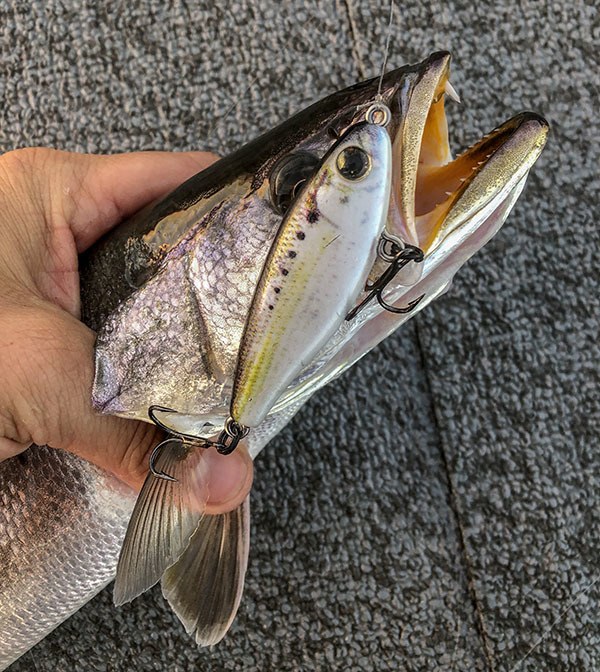
Techniques Used
In the video below you can see exactly how I "get the skunk out of the boat".
While you watch, note these things:
- No anchor, just trolling motor.
- Speed up the trolling motor when the bite slows down.
- Slow down when the bite speeds up.
- Hands are free with use of a foot-pedal, cable-steered trolling motor.
Here's another video when the bite was better, catching our limit of trout and then playing catch and release for a little bit:
You can see that we are casting to the rocks and working the bait back to the boat.
By "to the rocks", I mean literally hitting the rocks with the jighead, swimming it back until it's clear of shallow snags and then begin reeling slowly or jig it back.

Does this really matter if you are going to fish MRGO Long Rocks?
Only if you like catching limits of speckled trout.
Remember, trout are feeding on finfish against the rocks, so that is where they are looking.
Yes, you may catch a trout halfway to the boat, but that fish was probably following the lure before deciding to commit to it.
The Final Result
This fishing knowledge, combined with these lures, tackle and techniques, yielded a little more than 300 speckled trout over the course of four fishing trips in May of 2018 to fish MRGO Long Rocks.
Not bad.
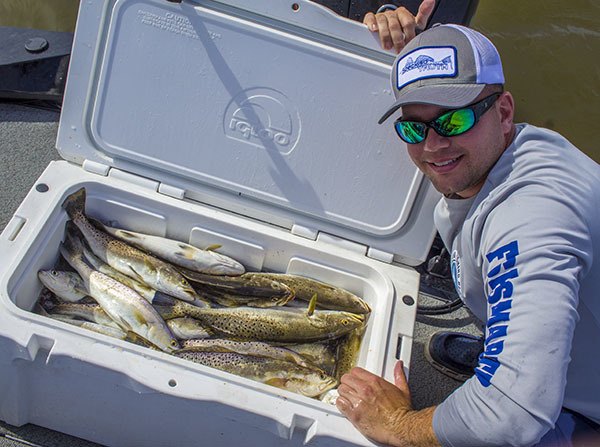
And in April of 2019 we did the same thing with minor adjustments, catching a limit of 50 speckled trout before 9:30am on the 28th, then catching another 25 before leaving them biting.
So you see the knowledge in this article will help you fish MRGO Long Rocks. I hope you enjoyed it!
Navigating To The MRGO Long Rocks
Hopedale Marina is the closest launch to the Long Rocks, with the Spoil Canal being the fastest route.
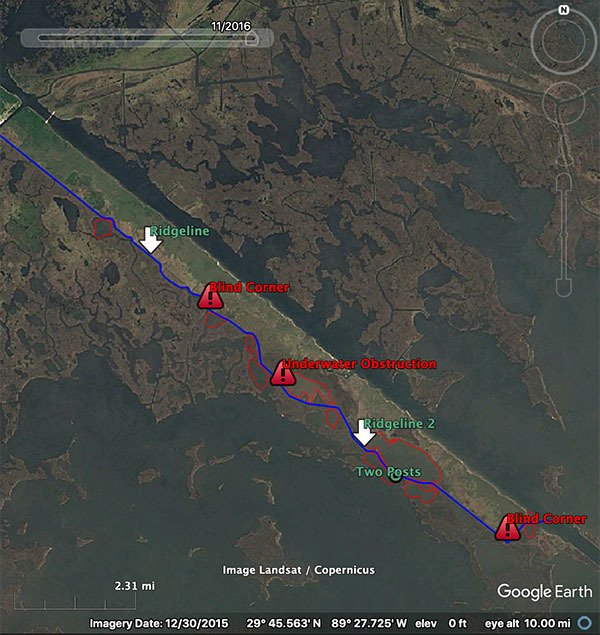
Be warned! The Spoil Canal is a tough customer, leaving anglers stranded or worse.
It can be difficult to navigate, so be sure to watch this video of how to safely run the Spoil Canal.
After that, you can always take this route around the Rock Dam to get into the MRGO and head southeast to the Long Rocks.

Glad you enjoyed it! If there’s something else you’d like to see, I am all ears!
Fabulous how-to article. Fantastic graphics. Thank you!
Thanks!
Yeah, I hope it cleans up more, but it is what it is.
One day the river will go down and stay down.
When it does, the fishing will only become better.
Thanks for commenting!
Glad to hear that it is beginning to clean up out that way. Tight lines